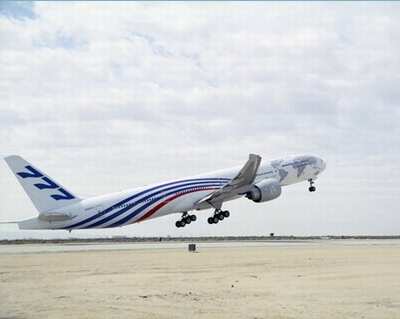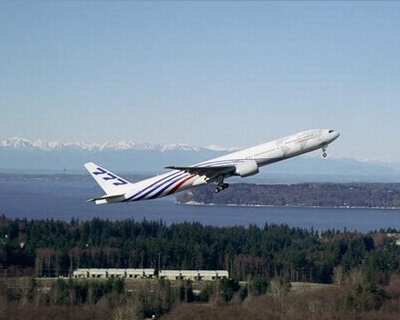AD 2020-11-11 Addresses Fuel Quantity Indicating System (FQIS) Issues
The FAA is adopting a new airworthiness directive (AD) for certain The Boeing Company Model 777 airplanes.

This AD requires a repetitive check of the fuel quantity indicating system (FQIS) fuel quantity calculation for the center wing tank (CWT) fuel quantity, developing a process to provide documentation to the flight crew that this check was done, and revising the existing airplane flight manual (AFM) to incorporate verification procedures and flight crew awareness. This AD was prompted by reports of discrepancies between the FQIS fuel quantity and the refueling truck uploaded fuel amount, followed by certain engine-indicating and crew-alerting system (EICAS) messages. The FAA is issuing this AD to address the unsafe condition on these products. This AD is effective June 18, 2020.
SUPPLEMENTARY INFORMATION: The FAA has received reports involving discrepancies between the airplane FQIS, specifically the CWT fuel quantity, and the refueling truck uploaded fuel amount, followed by a FUEL DISAGREE EICAS message at an early stage of flight (e.g., within 3 hours after take off), and/or with an INSUFFICIENT FUEL EICAS message. There have been at least 25 in-service events reported by operators. In at least 16 of these events, the airplanes continued with the mission; of those, 6 landed at the destination airport, and 10 had to land at a diversion airport. Insufficient fuel in the CWT as a result of this discrepancy is due to a design flaw in the FQIS in which the FQIS calibrates incorrect velocity of sound in the jet fuel during center tank fueling, which leads to an improper fuel density calculation, and results in the FQIS showing a different fuel amount from the actual fuel quantity in the CWT. In almost all of the events, the FQIS showed more fuel than the actual fuel quantity in
the CWT, resulting in less fuel on the airplane than the required fuel load for the mission. Alternatively, the FQIS could show less fuel than the actual fuel quantity in the CWT, resulting in more fuel on the airplane than the required fuel load for the mission. This issue affects only the CWT and not the main tanks.

There are practical difficulties in comparing the fuel quantity uploaded by the refueling truck or hydrant. The fueling system relies on the airplane FQIS to report the mass (kilograms or pounds) of fuel onboard and stops the fueling process when the requested fuel for the next flight is onboard. The refueling trucks then report the volume (liters or gallons) of fuel that was uploaded because fuel is paid for by a volume measurement. Comparing the fuel volume upload with the final fuel load mass, which also accounts for the remaining fuel in the tanks from previous flight, is not an easy calculation and is prone to significant inaccuracies. The existing airplane maintenance manual and operator fueling procedures require verification that the correct fuel amount required for the current mission has been loaded onto the airplane. The FAA has received reports that verification tasks are either not accomplished or done incorrectly. As a result, the flight crew may be unaware of insufficient fuel loaded in
the CWT and the airplane is dispatched for the mission. The airplane onboard fuel management system typically reports fuel quantity anomalies within the first three hours of flight resulting in a FUEL DISAGREE EICAS message and/or an INSUFFICIENT FUEL EICAS message that necessitates fuel check (e.g., leak check) and fuel quantity monitoring. These messages may require the flight crew to take action, such as performing an air turn back or a diversion.
Discrepancies in the CWT FQIS fuel quantity and the refueling truck uploaded fuel amount could result in an airplane dispatched with insufficient fuel loaded in the CWT and with the flight crew unaware of the insufficient fuel prior to departure. This condition, coupled with continued flight to the destination airport after receiving the EICAS messages while en route to the destination, could result in fuel exhaustion and subsequent power loss of all engines. Thereby, resulting in the inability to land at the destination airport or at a diversion airport, possibly leading to uncontrolled flight into terrain.
 ANN's Daily Aero-Linx (05.02.24)
ANN's Daily Aero-Linx (05.02.24) ANN's Daily Aero-Term (05.02.24): Touchdown Zone Lighting
ANN's Daily Aero-Term (05.02.24): Touchdown Zone Lighting Aero-News: Quote of the Day (05.02.24)
Aero-News: Quote of the Day (05.02.24) ANN FAQ: Contributing To Aero-TV
ANN FAQ: Contributing To Aero-TV NTSB Final Report: Cirrus Design Corp SR20
NTSB Final Report: Cirrus Design Corp SR20




